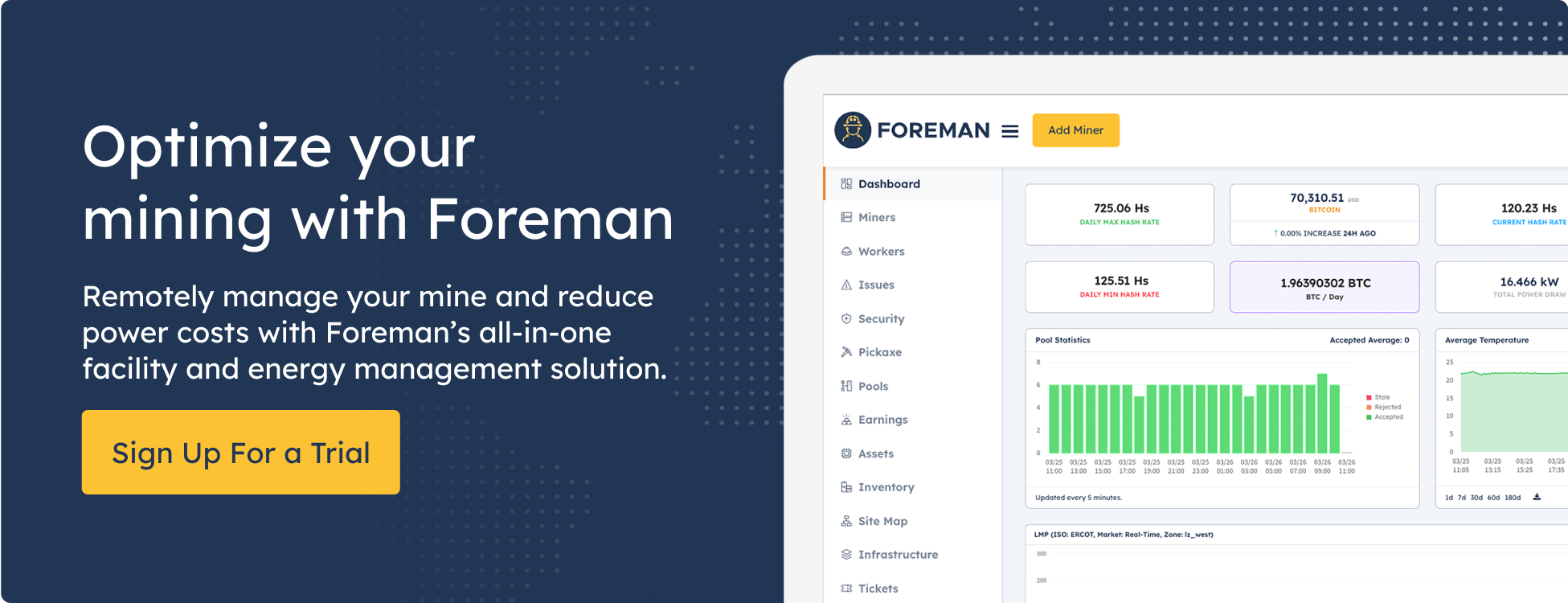The Bitcoin halving is a predictable event with unpredictable consequences. For older-generation machines, the reality is that profitability grows tighter and tighter. But in real-time electricity markets such as ERCOT, miners still capture optimal pricing and reduce overall volatility.
Foreman's Enterprise Power Control Features, specifically Cost Avoidance, have allowed users to avoid volatility. But what exactly does that look like in the 5th epoch? Below, we walk through a historical analysis comparing apples to apples from the past. The results show the increasing need to avoid high prices in real-time pricing environments and prove the capabilities of cost avoidance in volatile scenarios.
Analysis
For the below analysis, the methodology takes into account several different factors.
- Antminer S19J Pro Efficiency level at 29.5 J/th
- Real-time 15-minute index prices, averaging on the hour, reducing granular volatility
- Either over the past 6 months or for all of 2023
- Utilizing hourly Hashprice, comparing 6.25 Epoch to 3.125 Epoch
Let's first look at the average electricity rate in ERCOT, specifically in LZ West. In 2023, Electricity fluctuates widely, mostly in the summer and winter. This is due to factors such as weather and congestion, along with natural energy sources like wind and solar.
The histogram above shows the percentage of time each electricity price occurred over the year. Prices over $100 happened 7% of the time, while negative pricing was 8%. Looking at the bell curve, you can assume that average prices were around $22 per MWh with some volatile events.
Comparing the 4th and 5th Epoch
When looking at profitability between epochs at a time frame of the past 6 months. If you were to mine the same machine types on a per MW basis, the cost and profitability between Epochs would be drastically different. The left graph shows the 6.125 Epoch being relatively low in unprofitability. Each Red mark is an unprofitable hourly event based on current hashprice and real-time pricing.
The right chart has visibly more curtailment events. Assuming the Hashprice was cut in half (mostly) from 6.25 Epoch to 3.125 Epoch, the S19J Pro would have had to avoid many more pricing events.
Let's look at the past six months from a reference to uptime and compare 6.25 to 3.125 block subsidies. If you took the profitability and avoided all negative profitability events by using Foreman’s Cost Avoidance, the above are the results. The left side is pre-halving, with an uptime of 98% and an increase of only .2% with low-power mode machines.
If the past six months' hashprice occurred with a subsidy of 3.125 BTC, it's a different story. After halving, we had a 94.3% uptime on normal power mode and 95.1% in low, with an increased efficiency rating. On a cumulative basis, this comes out to tens of thousands of dollars per MW while using Cost Avoidance.
While real-time index pricing has major benefits, like lower electricity rates ($22/MWh), miners still need to avoid high-volatility time frames. Programmatic real-time curtailments with Cost Avoidance can help users as the 5th mining Epoch continues. With the right power strategy and the right tools, miners can be confident that their profit is at the most optimal level.

